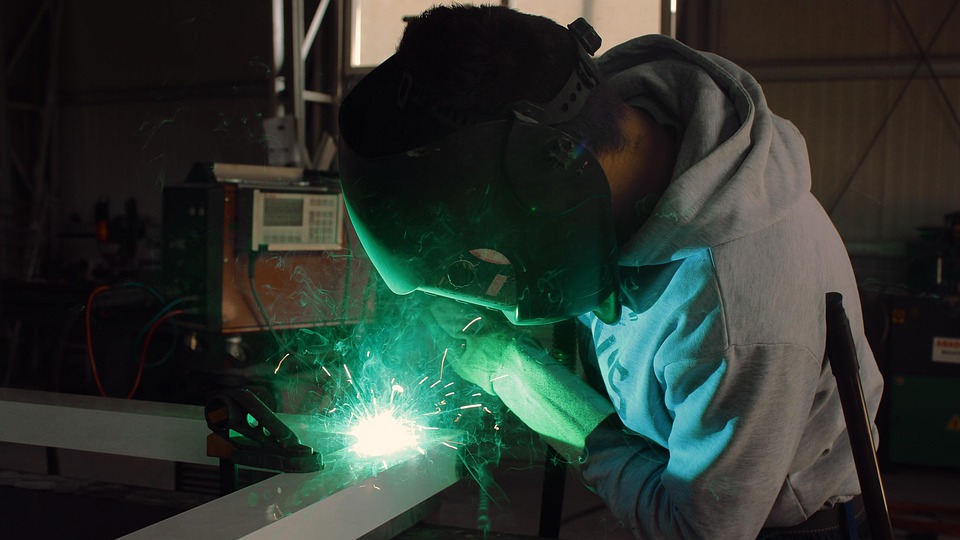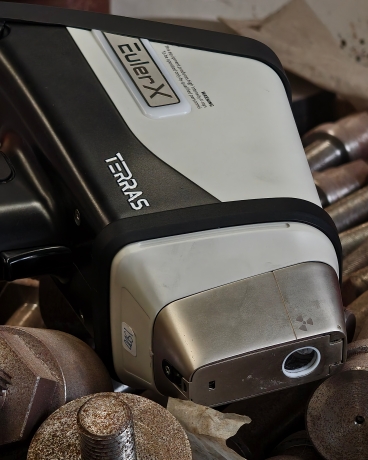
Alloy
A high-tech enterprise focusing on the development and application of X-ray technology products, committed to becoming a leading supplier of X-ray industrial testing solutions.
How XRF Analyzers Revolutionized Elemental Analysis
Elemental analysis has always been a cornerstone of scientific research, industrial processes, and quality control. From determining the composition of materials to ensuring the purity of substances, the ability to accurately measure elements in a sample is crucial. In the past, methods like wet chemistry, atomic absorption spectroscopy (AAS), and inductively coupled plasma mass spectrometry (ICP-MS) were widely used. However, the introduction of X-ray fluorescence (XRF) analyzers has revolutionized the field, making elemental analysis faster, more efficient, and non-destructive.
What is XRF?
X-ray fluorescence (XRF) is a powerful analytical technique that allows the identification and quantification of elements within a sample. It works by bombarding a sample with high-energy X-rays, causing the atoms in the sample to emit secondary (or fluorescent) X-rays. These emitted X-rays have characteristic wavelengths that correspond to specific elements, allowing researchers to identify and quantify the elements present in the material.

One of the key advantages of XRF analysis is that it does not require complex sample preparation, unlike some other techniques. Samples can be analyzed in their solid form, which saves both time and resources. Additionally, XRF analyzers can detect a wide range of elements, from sodium (Na) to uranium (U), making it versatile across various industries.
The Key Advantages of XRF Analyzers
Non-Destructive Testing
XRF analysis is a non-destructive method, meaning that the sample remains intact and can be used for other purposes after analysis. This is a major advantage over techniques like wet chemistry, which often require the destruction or alteration of the sample. The ability to perform non-destructive analysis makes XRF particularly valuable in industries where preserving the integrity of the sample is important, such as in archaeology, geology, and materials science.
Speed and Efficiency
Traditional methods of elemental analysis often involve complex sample preparation and lengthy testing procedures. XRF analyzers, on the other hand, provide rapid results, with many systems offering real-time data within minutes. This speed makes XRF particularly useful in industrial settings, where quick decision-making is crucial for process optimization and quality control.
Versatility and Sensitivity
XRF analyzers can detect a wide range of elements, making them suitable for a broad spectrum of applications. Whether it's analyzing metals, plastics, soils, or even food products, XRF can be applied across a variety of industries, including manufacturing, mining, environmental monitoring, and food safety. Furthermore, advances in technology have made XRF systems highly sensitive, capable of detecting trace amounts of elements even in complex matrices.
Minimal Sample Preparation
One of the most notable benefits of XRF analysis is the minimal sample preparation required. In many cases, samples can be analyzed directly without the need for grinding, digestion, or dissolution, saving time and reducing the risk of contamination. This ease of use makes XRF a go-to tool for both field and laboratory applications.
Portable and Easy to Use
In recent years, portable XRF analyzers have become increasingly popular. These handheld devices are ideal for on-site analysis, allowing users to conduct elemental analysis in the field without needing to transport samples to a lab. With intuitive interfaces and lightweight designs, modern portable XRF analyzers are user-friendly and require minimal training to operate, making them accessible to a wide range of industries.
Applications of XRF Analyzers
Mining and Geology
In mining and geology, XRF analyzers are essential for the analysis of ores and minerals. By quickly determining the composition of samples, geologists can make informed decisions about mining operations. XRF is used to identify valuable metals, such as gold, silver, and copper, and to assess the quality of ores before extraction.
Environmental Monitoring
XRF plays a vital role in environmental monitoring, particularly in the analysis of soil, water, and air samples. For example, XRF can be used to detect heavy metals in soil and water, helping to identify pollution sources and assess the environmental impact of industrial activities. This has become increasingly important as environmental regulations have tightened and the demand for sustainable practices has grown.
Quality Control in Manufacturing
In manufacturing, especially in industries like electronics and metallurgy, XRF is used to ensure the quality and consistency of products. By verifying the elemental composition of raw materials and finished goods, manufacturers can avoid costly defects and improve product performance. XRF is also instrumental in ensuring compliance with regulatory standards regarding material composition, such as in the electronics industry's RoHS (Restriction of Hazardous Substances) regulations.
Forensics and Archaeology
XRF has also found its place in forensic analysis and archaeology. In forensics, XRF can be used to identify trace elements in evidence samples, such as glass, soil, or metals, potentially linking them to a crime scene. In archaeology, XRF helps analyze ancient artifacts, allowing researchers to study the materials used by ancient civilizations without damaging the objects.
Food Safety and Quality Control
The food industry has benefited from XRF's ability to analyze the elemental composition of food products. For example, XRF can detect heavy metals like lead and cadmium in food, ensuring that products meet safety standards. It is also used in the quality control of ingredients, where elemental analysis can verify the authenticity and purity of food additives and packaging materials.

Terras EulerX900 Handheld Alloy Analyzer
Engineered for speed and reliability, the EulerX900S XRF Spectrometer conducts non-destructive testing by measuring X-ray fluorescence. It instantly detects metals, alloys, and contaminants, making it perfect for QA inspections, scrap metal recycling, and environmental monitoring. The portable, durable device includes a user-friendly touchscreen and Wi-Fi/USB connectivity for effortless reporting. Capable of analyzing elements from Mg to U, it delivers lab-quality results on the go.
Conclusion
XRF analyzers have transformed elemental analysis by offering a fast, non-destructive, and versatile method of detecting and quantifying elements in a wide range of materials. Whether in the field of environmental monitoring, manufacturing, or archaeology, XRF technology has proven to be indispensable in providing accurate and reliable results. As technology continues to advance, the potential applications of XRF analyzers will only grow, making them an invaluable tool across industries worldwide.
Join Us
Subscribe to our email list for updates & promotions.



